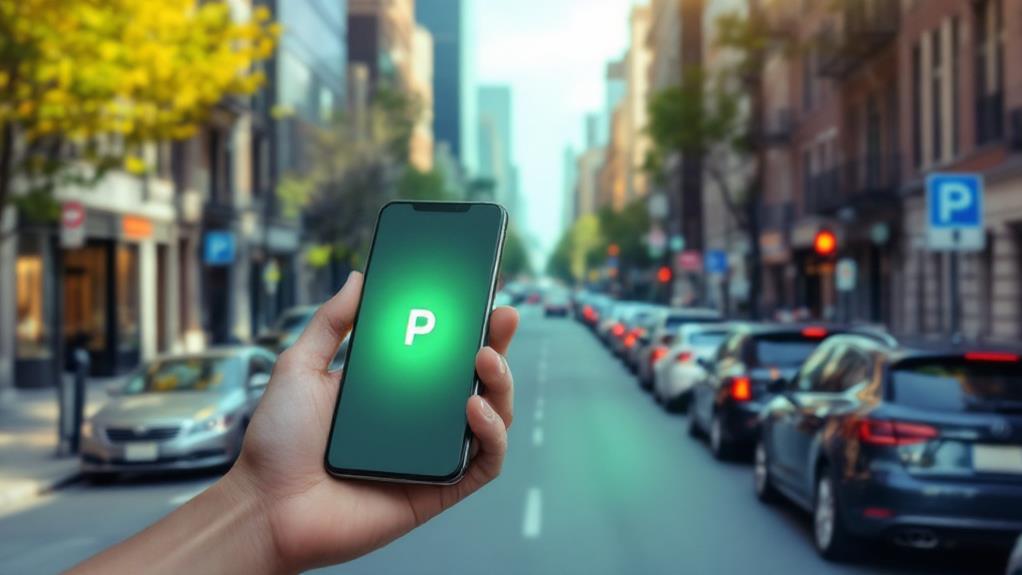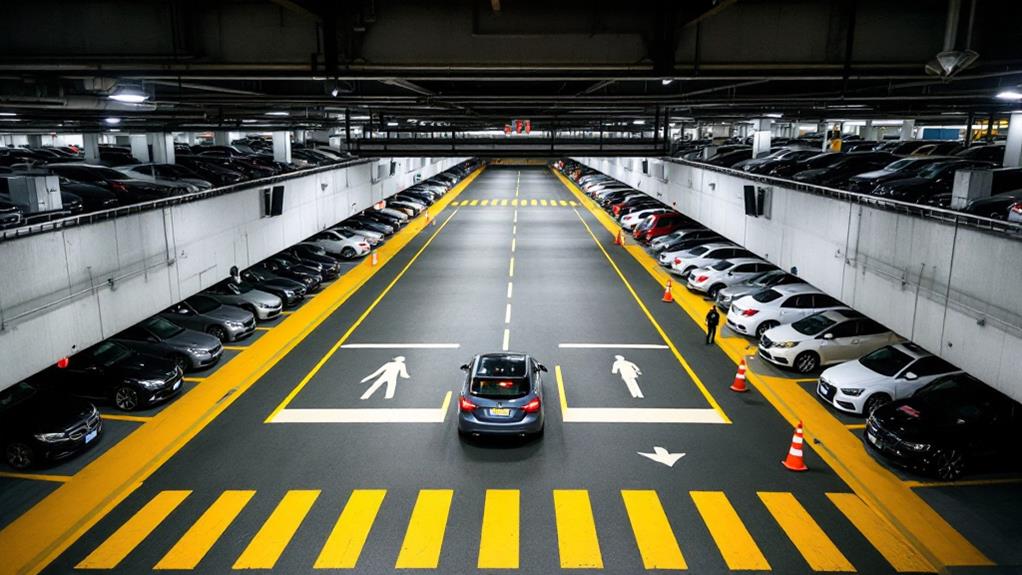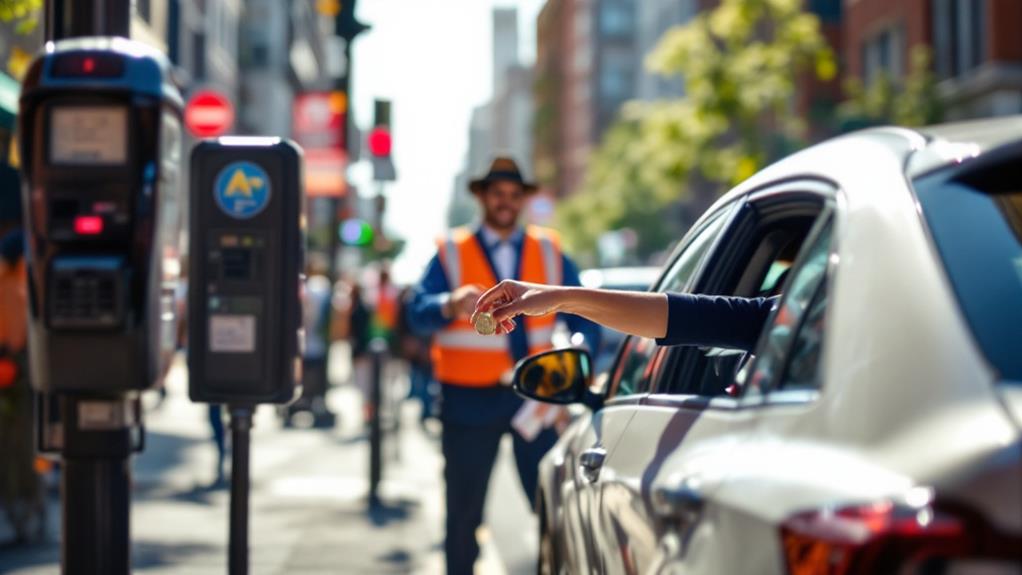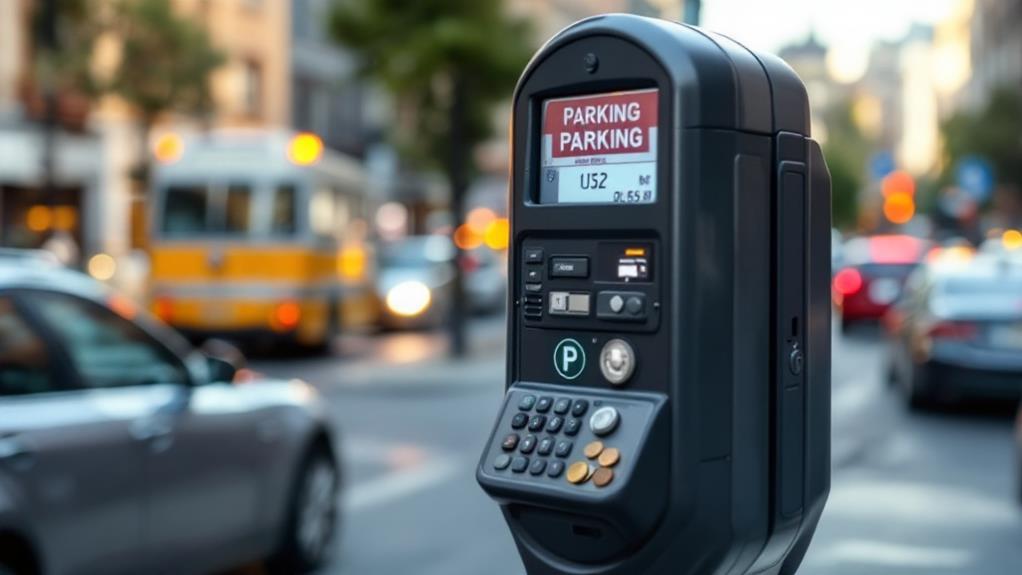How to Navigate City Parking Regulations Like a Pro
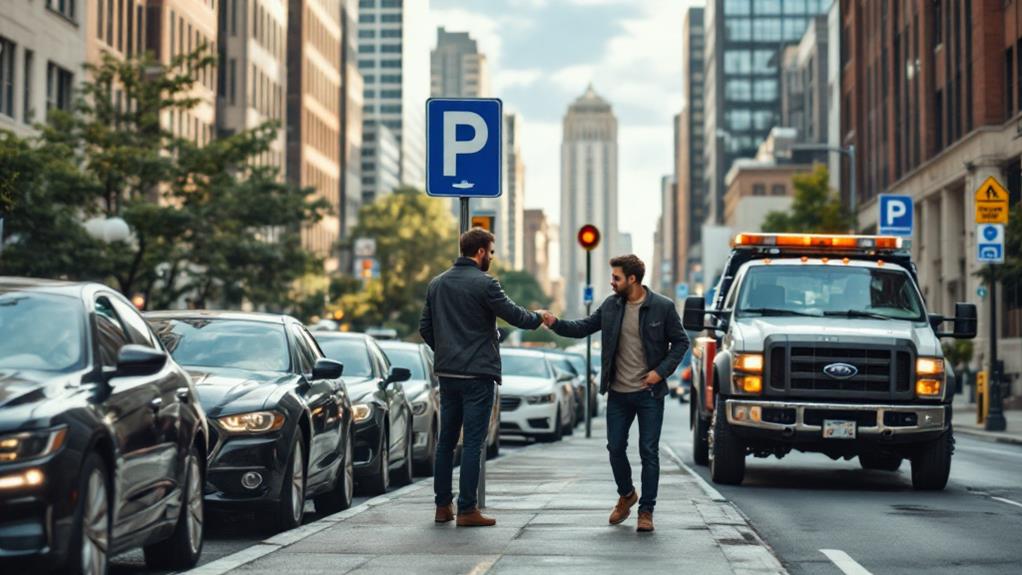
To traverse city parking like a pro, start by familiarizing yourself with local regulations and signage. Download parking apps for easy payment and real-time availability. Pay attention to curb colors and posted time limits. Use digital tools for contactless payments and to extend your parking session remotely. Avoid common pitfalls like parking in loading zones or near fire hydrants. Consider alternative transportation options during peak hours. Stay informed about seasonal changes, such as snow emergency rules or street cleaning schedules. By commanding these strategies, you'll save time, money, and stress while exploring the urban terrain. The city's parking secrets are waiting to be revealed.
Understanding Local Parking Policies
Traversing the maze of local parking policies can be challenging, but it's essential for stress-free city driving. To maneuver parking regulations effectively, you'll need to familiarize yourself with the specific rules of each city you visit. Start by carefully reviewing posted signs, which often indicate time limits, payment requirements, and any special restrictions.
Many cities now offer diverse parking options, including metered street parking, parking lots, and garages. Each may have its own set of rules regarding acceptable payment methods and time limits. Be sure to check if you need to enter your license plate number when paying, as this is becoming increasingly common.
Some areas may require parking permits for residents or visitors, so research this in advance if you're planning an extended stay. Pay attention to commercial loading zones and mobility lanes, which often have tow-away restrictions during peak hours.
To simplify your parking experience, take advantage of mobile apps offered by many cities. These apps can help you find available spots, pay for parking, receive alerts, and even extend your parking session remotely. By staying informed and utilizing available technology, you'll be better equipped to maneuver city parking regulations confidently.
Digital Tools for Parking Management
Digital parking tools have revolutionized the way drivers traverse city parking regulations. You can now access a wealth of information and services through mobile apps and digital platforms, making parking management more efficient and user-friendly.
Many cities offer dedicated apps like ParkHouston that allow you to pay for parking, extend your session remotely, and receive expiration alerts. These apps often integrate with pay stations and parking facilities, streamlining the entire process. Digital parking platforms such as ParkMobile take it a step further by providing contactless payment, reservation options, and guidance through an integrated system.
To find available spaces quickly, you can use real-time parking availability information and guidance features in routing apps. This technology helps reduce congestion and frustration when searching for a spot. License plate recognition and smart meter sensors enable automated enforcement and payment collection, reducing the risk of tickets.
Dynamic pricing is another innovative feature you'll encounter in some cities. This system adjusts parking rates based on demand, encouraging turnover and availability in high-traffic areas. By leveraging these digital tools, you can manage city parking regulations more effectively and avoid common pitfalls.
Decoding Signage and Markings

Interpreting urban parking signage and markings is essential for avoiding tickets and finding legal spots. When searching for on-street parking spaces, pay close attention to curb colors. Red means no stopping, yellow indicates commercial loading, and green signifies limited-time parking. Always check posted signs for specific time limits, payment requirements, and permitted vehicle types.
When entering your license plate number into a parking meter or app, be sure to input it exactly as it appears on your vehicle, without spaces or special characters. This precision is vital for avoiding citations.
Be aware of mobility lanes, which restrict parking during peak hours (7am-9am and 4pm-6pm) to improve traffic flow. Even if a spot looks available during these times, it's off-limits.
Remember that some parking rules apply regardless of posted signage. You can't park within 20 feet of a crosswalk or 15 feet of a fire hydrant, even if there are no visible restrictions. By understanding these regulations and carefully observing both signs and curb markings, you'll successfully maneuver city parking with confidence and minimize the risk of fines.
Payment Options and Strategies
Gone are the days of scrounging for quarters to feed parking meters. Modern city parking offers a variety of convenient payment options to streamline your experience. Mobile apps like ParkHouston and ParkMobile, text messaging, Google Pay, and credit/debit cards have revolutionized paid parking, making it easier than ever to manage your car ownership responsibilities.
When using these payment options, remember to enter your license plate number correctly, using 0 instead of O and avoiding special characters or spaces. Always select the right vehicle in the app to prevent issues. The ParkHouston app is particularly useful, as it sends alerts before your parking session expires and allows you to add time remotely.
Keep in mind that you should only pay at a meter or through an app when parking at a curb or in a city lot. Don't hand money to an attendant in these situations. By leveraging these payment strategies, you'll save time and avoid unnecessary stress. Adopt these technological advancements to make your urban parking experience smoother and more efficient, allowing you to focus on enjoying the city rather than worrying about your parked car.
Avoiding Tickets and Towing
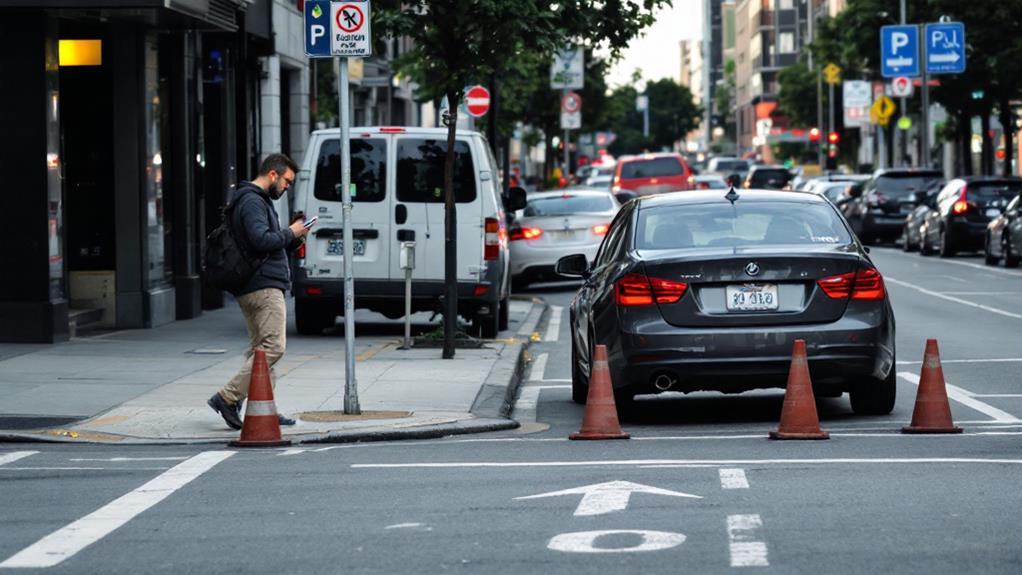
Every year, countless drivers fall victim to parking tickets and towing due to oversight or misunderstanding of city regulations. To avoid these costly mistakes, it's vital to familiarize yourself with local parking rules and stay vigilant when choosing parking spots.
Be aware of mobility lane hours, typically 7am-9am and 4pm-6pm, to steer clear of tow-away zones. When parking in city lots or at the curb, only pay at meters or through approved apps—never hand cash to attendants. Always check signs, receipts, or pay stations for time limits and move your vehicle before they expire.
To further protect yourself from parking tickets and potential towing:
- Don't park in driveways that block sidewalks
- Keep at least 15 feet away from fire hydrants
- Observe posted time limits in parking lots
- Pay attention to street cleaning schedules
Alternative Transportation Considerations
Traversing city parking doesn't always mean finding a spot for your car. In fact, you have several alternatives that can make your urban expedition smoother and potentially cheaper. Public transit options like buses, trains, and light rails offer a convenient way to traverse the city without worrying about parking. You'll save money on parking fees and reduce your environmental impact.
For shorter trips, consider using bike-sharing programs available in many cities. These provide a quick, eco-friendly way to get around while avoiding parking hassles altogether. If you prefer door-to-door service, ridesharing services like Uber and Lyft can drop you off at your destination, eliminating the need to search for parking.
If you must drive, look into carpooling with colleagues or neighbors. This can help split parking costs and reduce the number of spaces needed. Additionally, if you own an electric vehicle, check if your city offers discounted or free parking as an incentive. By exploring these alternative transportation options, you'll not only save time and money but also contribute to reducing traffic congestion and improving air quality in your city.
Adapting to Seasonal Parking Changes
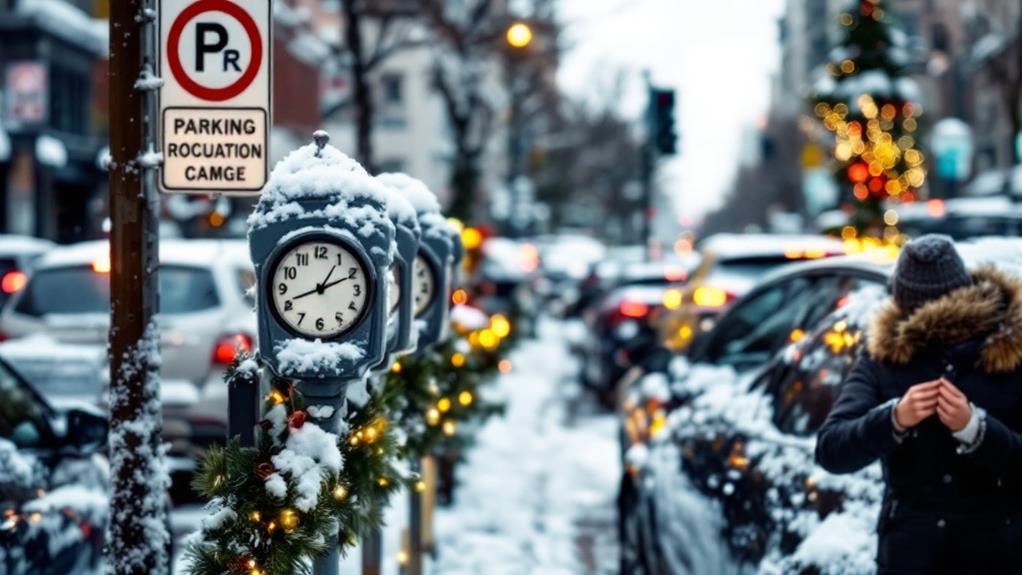
While alternative transportation options can simplify your city travels, you'll still need to traverse parking regulations when driving. Seasonal changes bring their own set of challenges, especially during winter months. To adapt effectively, keep these key points in mind:
- Be aware of alternate-side parking and snow emergency rules in your city.
- Research local regulations before heavy snowfall to avoid parking in designated snow removal areas.
- Keep a snow shovel in your car to clear a spot if you get snowed in.
- Choose higher ground spots in flood-prone areas to protect your vehicle.
Stay informed about seasonal parking changes by regularly checking city websites or mobile apps. These resources often provide up-to-date information on temporary parking bans and regulation shifts throughout the year. When faced with limited street parking options, consider using parking garages, which may offer more stability during extreme weather conditions.
Remember to plan ahead and be flexible with your parking choices. By adapting to seasonal changes and staying informed, you'll manage city parking regulations like a pro, regardless of the weather. This proactive approach will help you avoid fines, keep your car safe, and reduce stress when parking in urban areas.
